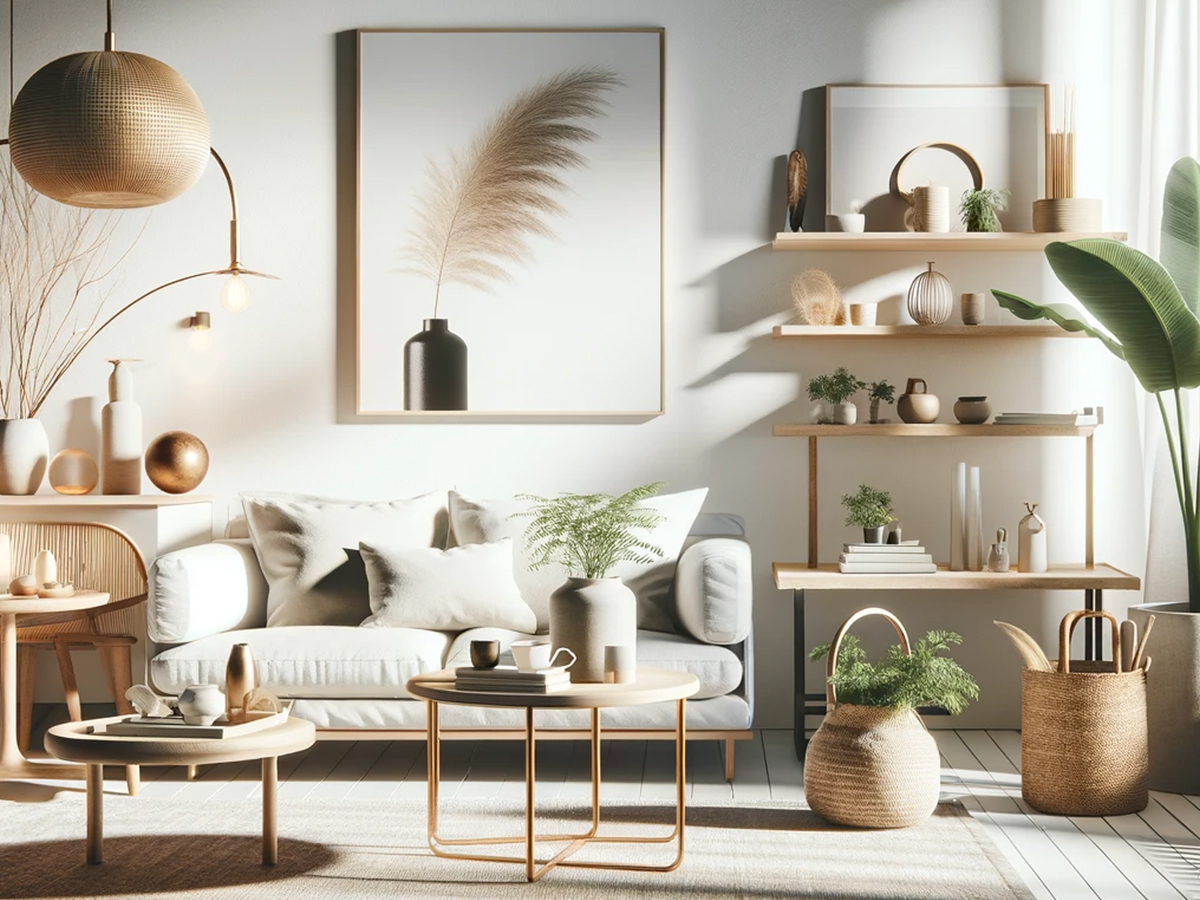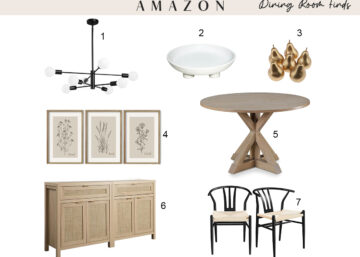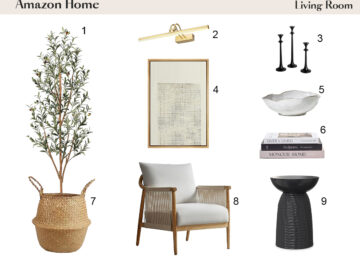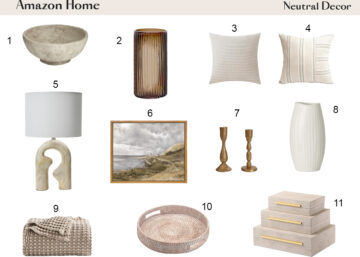The Art of Minimalist Design: Simplifying Your Space
Introduction: Embracing the Essence of Minimalist Design
In a world increasingly cluttered with information, objects, and distractions, the allure of minimalist design emerges not just as a trend but as a profound response to the complexity of modern living. This design philosophy, rooted in the Japanese concept of ‘Ma’—emphasizing the value of empty space and the beauty of simplicity—offers a pathway to transform our environments into havens of peace, efficiency, and aesthetic purity. Minimalist design transcends the mere reduction of physical items; it invites us to rethink our relationship with the spaces we inhabit, encouraging a harmonious balance between form, function, and the human spirit.
The Unseen Dimensions of Minimalism
While minimalist design is often visually identified by clean lines, monochromatic color schemes, and uncluttered spaces, its essence delves much deeper into the unseen dimensions of our daily lives. It challenges the prevailing notion that more is better, asking us to consider how less can enhance our well-being, creativity, and satisfaction. This perspective is seldom explored in depth by industry experts, who frequently focus on the aesthetic aspects of minimalism rather than its potential to fundamentally improve how we live and work.
Minimalist Design: A Catalyst for Introspection
The journey towards minimalist design is as much an inward exploration as it is an external transformation of space. It prompts us to question our values, what we truly need, and what brings us joy and fulfillment. This introspective process is rarely discussed in the context of interior design and architecture, yet it is crucial for creating spaces that not only look serene but also resonate deeply with the individuals who inhabit them. By simplifying our surroundings, we’re not just discarding the superfluous; we’re making room for growth, focus, and a deeper connection with our true selves.
The Principles of Minimalist Design
The essence of minimalist design lies in its simplicity, but achieving this simplicity is a complex process that involves much more than just choosing a few pieces of furniture or applying a monochromatic color scheme. It’s about embracing a philosophy that prioritizes the essentials, creating spaces that are both aesthetically pleasing and profoundly functional. Below, we delve into the core principles that guide minimalist design, offering insights into how these principles can transform spaces into refined, harmonious environments.
Simplicity in Form and Function
- Unity and Harmony: At the heart of minimalist design is the pursuit of unity and harmony through simplicity. This principle dictates that every element in a space should serve a purpose, whether functional, emotional, or aesthetic. By eliminating unnecessary details, minimalist design focuses attention on the essence of each element, allowing spaces to breathe and users to experience a sense of calm and order.
- Streamlined Structures: Minimalist design favors clean lines, simple shapes, and streamlined structures. This doesn’t mean spaces become sterile or cold; rather, it allows the intrinsic beauty of materials and form to shine through. By reducing visual noise, minimalist design enhances the appreciation of the subtle textures, natural light, and the interplay between different elements within a space.
The Importance of Quality over Quantity
- Selectivity and Significance: Embracing minimalism means being selective about what we choose to include in our spaces. This principle champions the idea of ‘less but better,’ suggesting that a few high-quality items are more valuable than numerous but inferior alternatives. It’s not about austerity, but about finding joy and value in the things we choose to surround ourselves with.
- Sustainability and Mindfulness: Inherent in the preference for quality over quantity is a deeper awareness of sustainability and mindfulness. By choosing items that are durable, timeless, and meaningful, minimalist design aligns with environmentally responsible practices and promotes a more thoughtful way of consuming and living. This approach encourages a deeper connection with our environment, fostering spaces that reflect our values and ethics.
The Psychological Benefits of Minimalist Spaces
- Enhanced Focus and Clarity: One of the most compelling arguments for minimalist design is its capacity to reduce distractions and create environments that enhance focus and mental clarity. In a world full of distractions, minimalist spaces provide a peaceful retreat for concentration and creativity, proving that a well-designed environment can positively impact our well-being.
- Promoting a Sense of Tranquility: The simplicity and order inherent in minimalist design contribute to a sense of tranquility and peace. This psychological benefit is particularly relevant in today’s fast-paced, high-stress environments. By creating spaces that are visually calming and physically organized, minimalist design can help mitigate the effects of stress and promote a sense of well-being.
The principles of minimalist design—simplicity in form and function, and the importance of quality over quantity—offer a foundation for creating spaces that are not only beautiful and functional but also deeply aligned with the human need for clarity, tranquility, and connection. Elemental Viz’s approach to interior design and 3D rendering is deeply influenced by these principles, enabling us to create spaces that transcend traditional aesthetics and touch the very essence of minimalist philosophy.
The Psychological Benefits of Minimalist Spaces
The impact of minimalist design extends far beyond its aesthetic appeal, deeply influencing our mental health and well-being. By fostering environments that prioritize simplicity, functionality, and beauty, minimalist spaces offer a sanctuary from the chaos of everyday life. This section explores the psychological benefits of embracing minimalist principles in our living and working environments, highlighting how these spaces can enhance mental clarity, promote tranquility, and support a healthier lifestyle.
Enhancing Mental Clarity and Focus
- Reduction of Cognitive Overload: Minimalist spaces, by their clutter-free and simplified environments, significantly reduce cognitive overload. This is particularly beneficial in an age where information overload is a common challenge. By minimizing distractions, these spaces allow our minds to focus more effectively, enhancing productivity and creativity. For professionals and creatives, this means a workspace that fosters concentration and the flow of ideas, essential for innovation and problem-solving.
- Promotion of Decision-Making: The simplicity inherent in minimalist design also aids in decision-making. With fewer distractions and less visual noise, individuals are better able to evaluate options and make choices that align with their goals and values. This clarity can be transformative, not only in professional settings but also in personal life, where decision fatigue often undermines well-being.
Fostering Tranquility and Reducing Stress
- Creation of Peaceful Retreats: The serene and uncluttered nature of minimalist spaces naturally fosters a sense of tranquility. In a minimalist environment, the mind is not constantly triggered by disorder or unfinished tasks, which are often sources of stress. This tranquility is crucial for mental health, offering a peaceful retreat where individuals can unwind, reflect, and recharge.
- Supporting Mindfulness and Presence: Minimalist design encourages mindfulness and presence. In spaces free of excess, individuals find it easier to engage with the present moment, appreciating the beauty and function of their immediate environment. This mindfulness can lead to a deeper appreciation of life’s simple pleasures, enhancing overall happiness and contentment.
Encouraging Personal Growth and Self-Reflection
- Simplifying Life’s Priorities: Minimalist spaces also prompt personal growth and self-reflection by encouraging individuals to consider what is truly important in their lives. This process of simplification goes beyond physical objects, touching on personal priorities, relationships, and activities. By fostering an environment that reflects one’s values and aspirations, minimalist design can inspire changes that lead to a more fulfilling life.
- Enhancing Personal Autonomy: Finally, minimalist spaces can enhance personal autonomy by freeing individuals from the burden of excess possessions and the maintenance they require. This liberation from physical clutter translates into more time and energy for personal development, hobbies, and meaningful activities. It’s a testament to how our environments can shape our lives, empowering us to live more intentionally and autonomously.
The psychological benefits of minimalist spaces—enhanced mental clarity and focus, fostered tranquility, and encouraged personal growth—highlight the profound impact of our environments on our mental and emotional well-being. By embracing minimalist design principles, Elemental Viz aims to create spaces that not only meet the aesthetic and functional needs of our clients but also support their psychological health and personal journeys.
Minimalist Design in Practice
Implementing minimalist design is an art that extends beyond the mere act of decluttering or adhering to a monochromatic color palette. It involves a deep understanding of space, a thoughtful consideration of functionality, and a commitment to the principles of simplicity and mindfulness. Below, we explore how minimalist design can be practically applied to transform spaces, offering unique insights seldom discussed in mainstream discourse.
Tailoring Minimalism to Space and Function
- Adapting Minimalism to Varied Environments: One often overlooked aspect of minimalist design is its versatility. While the core principles remain the same, the application of minimalism should be thoughtfully adapted to the specific function and character of each space. For example, a minimalist approach to a bustling commercial kitchen will differ from that of a serene residential living room, yet both can achieve harmony and functionality within the minimalist framework.
- Integrating Technology Seamlessly: In the digital age, technology is an integral part of our lives and spaces. A unique challenge within minimalist design is incorporating technology in a way that enhances, rather than detracts from, the minimalist aesthetic. This can involve hidden wiring, built-in devices, and smart home systems that maintain the clean lines and uncluttered spaces central to minimalism, while still providing full functionality.
Mastering the Use of Color, Texture, and Light
- Beyond Black and White: While black, white, and neutral tones are staples of minimalist design, using color strategically can add depth and vibrancy without compromising simplicity. The key is to select a limited palette and use colors intentionally, whether to highlight architectural features, create focal points, or evoke specific moods.
- Texture as a Silent Communicator: In minimalist spaces, where decoration is minimized, texture plays a crucial role in adding warmth and interest. The interplay of textures—smooth concrete, soft textiles, rough wood—can create a rich sensory experience that brings the space to life. This subtle yet powerful element of design is often underutilized and can make a significant difference in the feel of a minimalist environment.
- Harnessing the Power of Natural Light: Light is a fundamental component of minimalist design. It has the ability to transform spaces, enhance materials, and create an interplay of shadows and highlights that add a dynamic quality to simplicity. The thoughtful placement of windows, skylights, and even artificial lighting can elevate a minimalist design, making the space feel alive and connected to the outside world.
Navigating the Challenges of Minimalism
- Maintaining Warmth and Personality: A common misconception is that minimalist spaces are cold and impersonal. However, incorporating personal elements without cluttering the space is possible through careful selection and placement. Items with sentimental value, art pieces, or even a strategically placed pop of color can add warmth and personality while maintaining a minimalist ethos.
- Evolving with Minimalism: Minimalism is not a static concept but a philosophy that can evolve with time, technology, and personal growth. Openness to change, whether in the form of new technologies, sustainable materials, or changes in personal taste, is essential. This adaptability ensures that minimalist design remains relevant and deeply personal, reflecting the current needs and values of its inhabitants.
In practice, minimalist design is about much more than aesthetics; it’s about creating spaces that enhance the quality of life, promote well-being, and reflect a mindful approach to living and working. Through the careful application of minimalist principles tailored to the unique characteristics of each space, we can achieve environments that are not only visually stunning but also deeply functional and personally resonant. Elemental Viz’s commitment to this thoughtful application of minimalism enables us to offer solutions that are innovative, sustainable, and profoundly aligned with the needs and aspirations of our diverse clientele.
Conclusion: The Enduring Legacy of Minimalist Design
The exploration of minimalist design reveals its profound impact on both our environments and our lives. This design philosophy, characterized by simplicity, functionality, and mindfulness, offers more than just an aesthetic choice—it presents a pathway to a more intentional and fulfilling way of living. As we conclude this discussion, it’s important to reflect on the timeless appeal of minimalism and its relevance in today’s world.
The Timeless Appeal of Minimalism
- Beyond Trends: Minimalist design transcends fleeting trends, embodying principles that have enduring value. Its focus on simplicity and functionality responds to a universal desire for clarity and harmony in our surroundings. This timeless appeal ensures that minimalist design continues to inspire and influence, regardless of changing fashions or technologies.
- A Philosophy for All: One of the most compelling aspects of minimalism is its universality. Regardless of the type of space—residential, commercial, or public—minimalist principles can be applied to create environments that are not only beautiful but also deeply functional and sustainable. This inclusivity makes minimalism a relevant choice for a diverse range of individuals and organizations, from homeowners to businesses seeking to enhance their spaces.
Looking Forward with Minimalism
- Embracing Change: As we move forward, the principles of minimalist design offer a framework for navigating the complexities of modern life. By embracing change, focusing on the essentials, and cultivating mindfulness, we can create spaces that reflect our values and aspirations. Minimalism, therefore, is not just about the spaces we inhabit but about shaping the future we envision.
- Elemental Viz and the Future of Design: At Elemental Viz, our commitment to minimalist design is intertwined with our vision for the future. By leveraging our expertise in 3D rendering, interior design, and floor planning, we aim to continue exploring and expanding the boundaries of minimalist design. Our goal is to create spaces that not only embody the minimalist ethos but also inspire others to consider how simplicity, functionality, and sustainability can enhance their lives and environments.
In embracing minimalist design, we embrace a way of living that prioritizes what truly matters. This journey towards minimalism is not just about subtracting the unnecessary but about adding meaning, value, and beauty to our lives. As we look to the future, the principles of minimalism stand as a beacon, guiding us toward more mindful, intentional, and fulfilling ways of living and designing.








